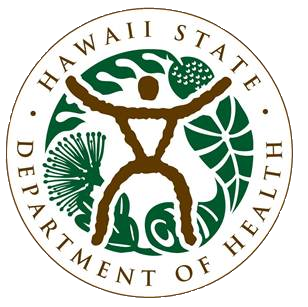Hawaiʻi Revised Statutes (HRS)
Online versions maintained by the Hawaiʻi State Legislature.
HRS 128D, Hawaiʻi Environmental Response Law (HERL). HERL is modeled after the federal Comprehensive Environmental Response, Compensation & Liability Act of 1980 (CERCLA), commonly known as the federal Superfund Law. Effective in 1990, this statute establishes authority for the HEER Office to respond to releases of hazardous substances.
HRS 128E, the Hawaiʻi Emergency Planning and Community Right-to-Know Act (HEPCRA). HEPCRA is modeled after the federal Emergency Planning and Community Right-to-Know Act (EPCRA). This statute established planning, reporting, emergency notification, and public information access requirements related to hazardous chemicals, and also created the Hawaiʻi State Emergency Response Commission (HSERC), established within the HDOH, as well as Local Emergency Planning Committees (LEPC) located in each county of the state to implement emergency response planning and related actions. For more information, see HEER’s Right-to-Know Compliance (HEPCRA) page.
HRS 508C, the Uniform Environmental Covenants Act (UECA). Enacted in July 2006, this statute provides a regulatory mechanism for recording “institutional controls” on the official land records of a contaminated property. Institutional controls are used in situations where it is not feasible or necessary to remove all contamination from a property. UECA is not limited to use by the HDOH and any two parties can enter into a UECA.
Hawaiʻi Administrative Rules (HAR)
Online versions maintained by the Office of the Lieutenant Governor.
HAR 11-5, Environmentally-Related Illness and Injury Reporting. Prepared to provide the requirements for health care professionals and laboratory directors to report to the department, the diagnosis of any person afflicted with a designated environmentally-related illness or injury. For more information, see HEER’s Pesticide and Heavy Metal Poisoning page.
HAR 11-451, Hawaiʻi State Contingency Plan (SCP). Developed to implement the requirements of HRS 128D, under which HDOH responds to hazardous substance releases. This state administrative rule is modeled after the U.S. EPA’s National Contingency Plan (NCP), which was developed to implement CERCLA.
HAR 11-452, Requirements for the Decontamination and Cleanup of Methamphetamine Manufacturing Sites. Developed to implement the requirements of Act 170 of the 2006 legislative session, which directed HDOH to establish permanent rules for the cleanup and decontamination of illegal drug manufacturing sites. In addition, the HEER Office developed technical guidance for the cleanup of these sites. For more information, see HEER’s Methamphetamine Laboratory Cleanup page.
HAR 11-453, Hawaiʻi Emergency Planning and Community Right-to-Know Act (HEPCRA). Developed to implement the requirements of HRS 128E. For more information, see HEER’s Right-to-Know Compliance (HEPCRA) page.
